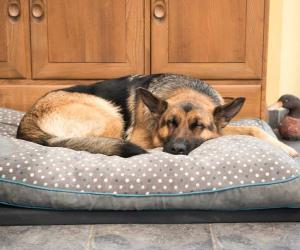The 10 Biggest Spiders Crawling Around New South Wales
Sitting south of Queensland, New South Wales offers an arid environment for local wildlife. With hot summers and cold winters, over 8 million people call it their home with massive city areas and comfortable suburban towns. This balance entices many dangerous spiders, preferring areas with large populations.
Australia’s climate and population make it the home to over 10,000 spider species, but researchers haven’t even discovered half of them. In New South Wales, there are many spiders to watch out for, so keep these ones in mind.
Biggest Spiders in New South Wales
Biggest Spider in New South Wales: Australian Tarantulas – 16 centimeters
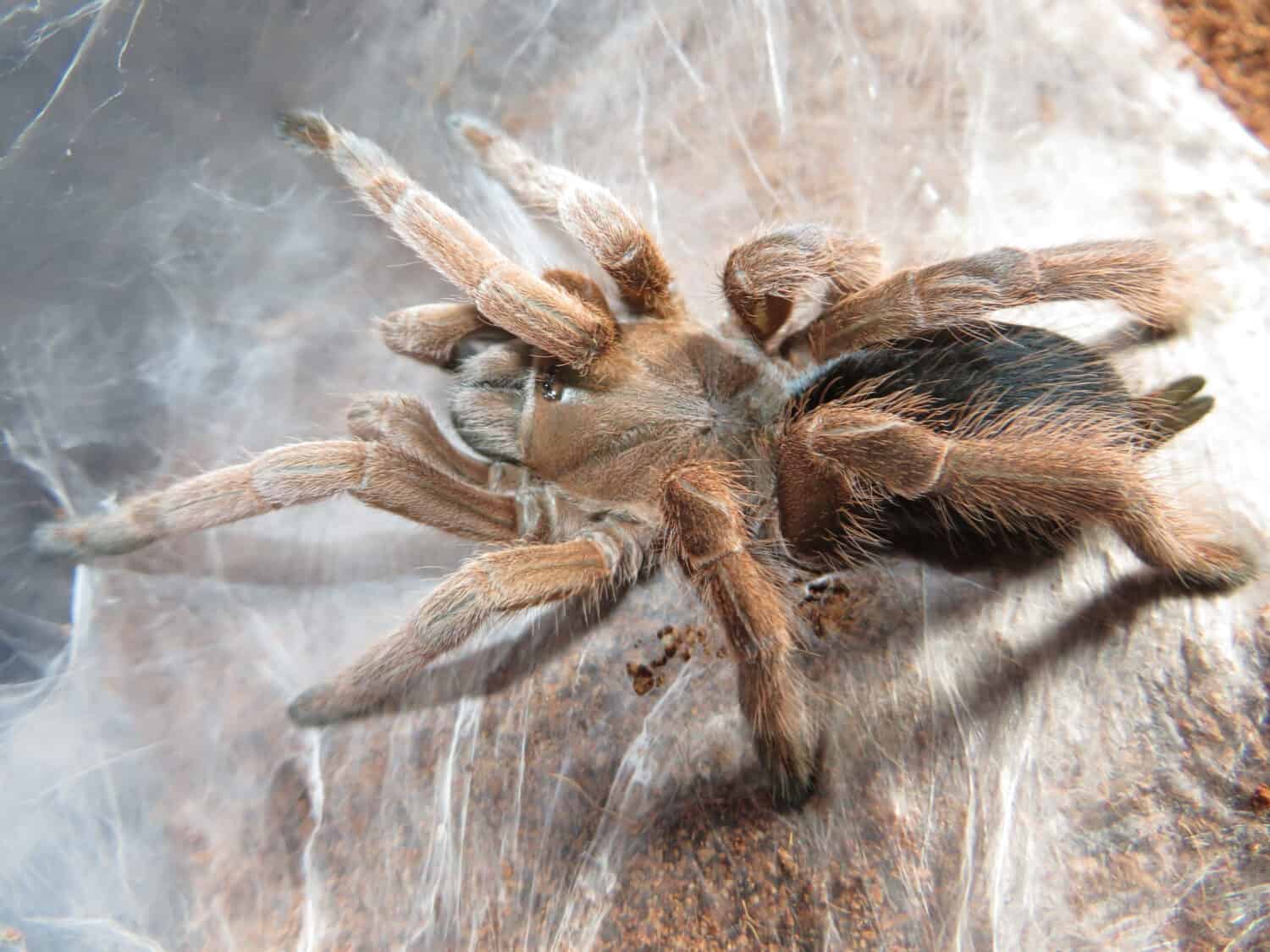
©DesertViking/Shutterstock.com
The biggest spider you want to avoid in New South Wales is easily the Australian tarantula. Also known as the whistling spider or barking spider, they have a reputation as being a bird-eating spider, but this is never a part of their diet. The diet of the Australian spider primarily consists of insects, lizards, and frogs.
They burrow anywhere but watch your feet around leaf litter – they conceal themselves from their prey. They wait in this burrow for their preferred prey to come closer, and you don’t want to be caught in the middle. They bite hard, releasing dangerous venom. Despite this risk, the local pet trade still sells them, often illegally collecting them from their natural environment.
Sydney Huntsman Spider – 16 centimeters
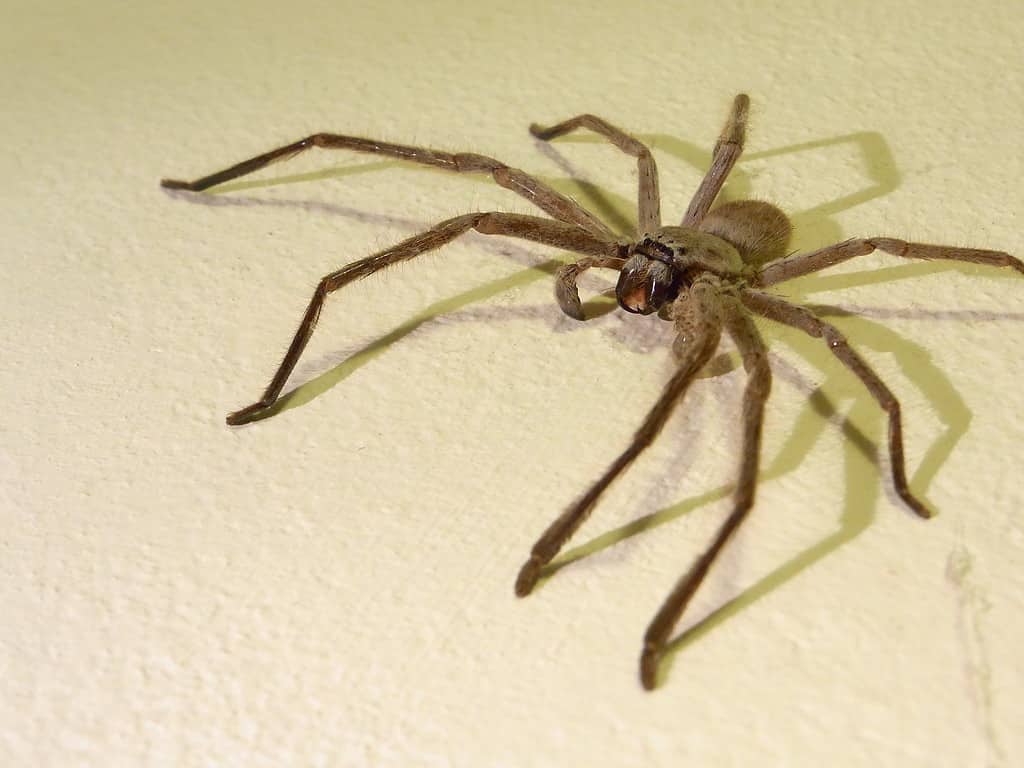
©Creative Commons – License
The body of the Sydney huntsman spider is one of the reasons that it makes the top of this list. Some of the largest spiders in Australia have at least 1 inch in diameter, but that’s the size of only the body of this species. At their full size, their body and legs measure up to 16 centimeters, competing for the top spot in New South Wales with the Australian tarantula.
Though scientists currently classify this spider under the “Holconia immanis” classification, other names included Isopeda immanis and Delena immanis through the years. Despite their large and shocking appearance, they aren’t confrontational. They could use their venom to defend themselves against you, but they prefer to scamper away if they see a threat.
Huntsman (Giant Crab) Spiders – 15 centimeters
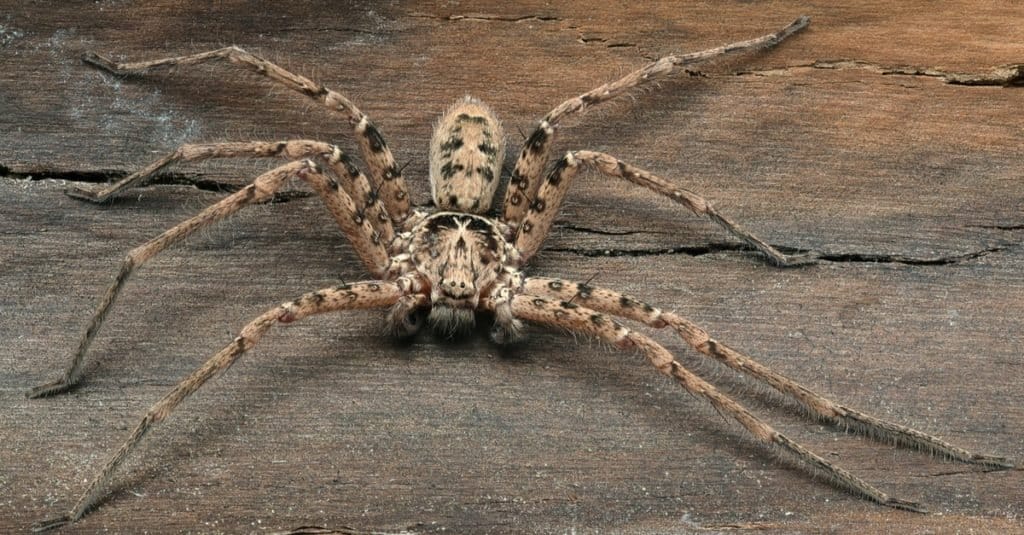
©iSKYDANCER/Shutterstock.com
Huntsman spiders are some of the largest arachnids in the entire world, but the ones in Australia are especially frightening. With a 15-centimeter diameter, these spiders look frightening. In some parts of the world, this spider grows to be nearly a foot long. Their long legs curve to the front, rather than outstretching straight from the body. This unique silhouette gives it a crab-like appearance. While they share the same name for the species, the Sydney huntsman and the giant crab spider are much different species.
These spiders are non-venomous. Despite biting in defense, they won’t release anything into your bloodstream, and they aren’t dangerous. The bite hurts a bit, but a hospital visit isn’t a necessity. If you want to avoid them, stay away from caves and similar areas that they can hide in.
Golden Orb Weaving Spiders – 15 centimeters
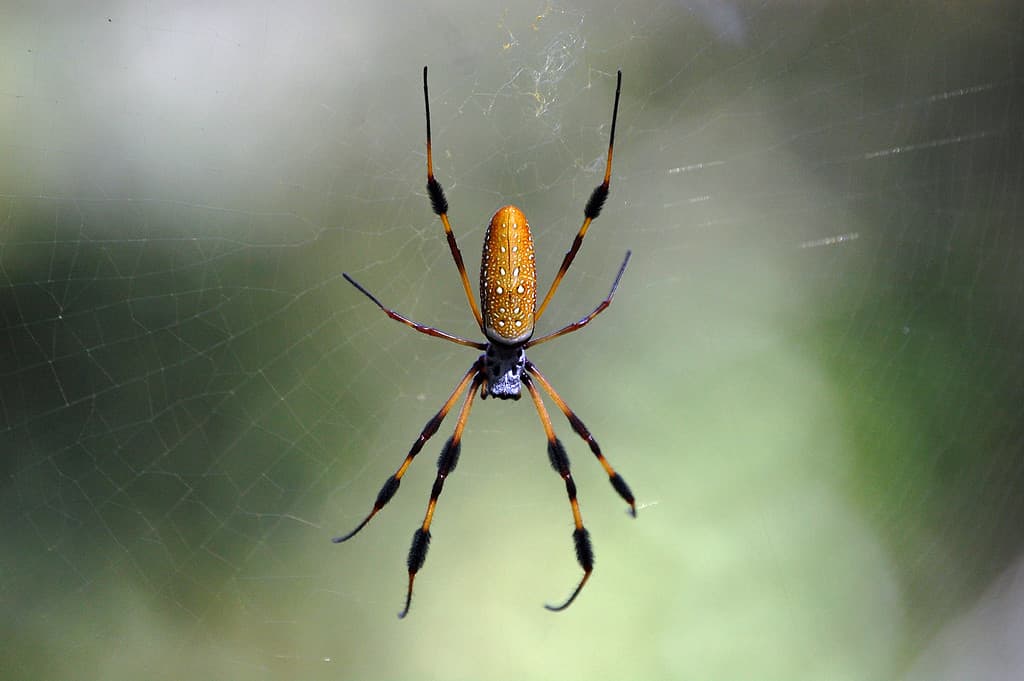
©Creative Commons – License
With outstretched legs, the golden orb weaver is one of the biggest spiders you might come across in New South Wales. They range in color from a red to a green hue, though they have a white belly. The striped legs help them to easily prepare their web, pointing the tips inward. Other wandering spiders have legs that point outward.
The diet of the golden orb spider consists of beetles, moths, and flies. While they have a small body, the extensive length of their legs makes them large. If they manage to bite you, the giant golden orb-weaving spiders don’t impose more than a mild reaction. You might feel tight or sore in your muscles initially, but the effects subside fast without having to seek medical treatment.
Golden Huntsman Spiders – 14 centimeters
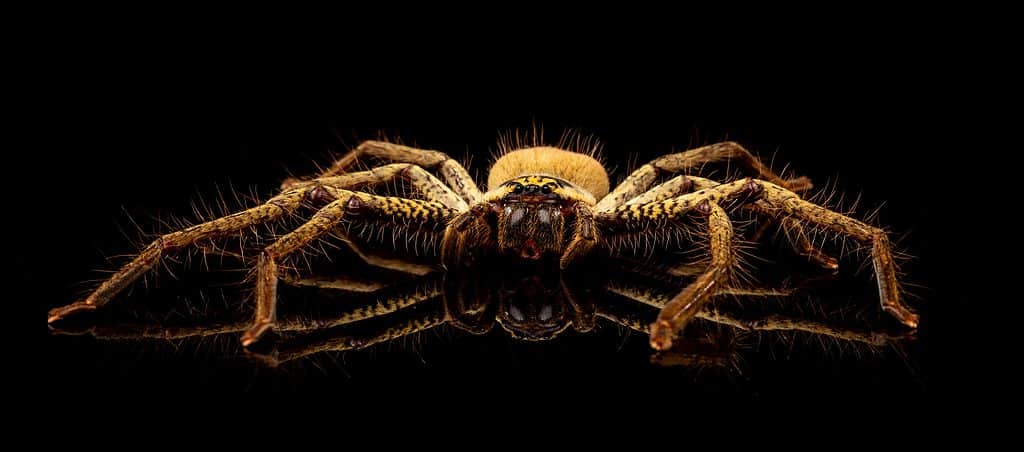
©Heather Ruth Rose/Shutterstock.com
Their body is about an inch big, looking starkly smaller than their 7-12-centimeter legs. Their full diameter ranges from 9 to almost 15 centimeters, though their diet and gender play a role. Like other huntsman spiders, they are venomous, but the toxins are rarely strong enough to cause long-term damage.
Through the years of capture, some people adopt them as pets, despite their reputation for fast escapes. They often live to be 3 years old in captivity with proper care. Golden huntsman spiders prefer a diet of live insects. Since they require very little water to survive, they are easy to care for in captivity.
For the most part, the golden huntsman spider prefers the climate of Far North Queensland. However, the adaptability of this species places it as far south as New South Wales and Ballina.
Tiger Spider – 12 centimeters
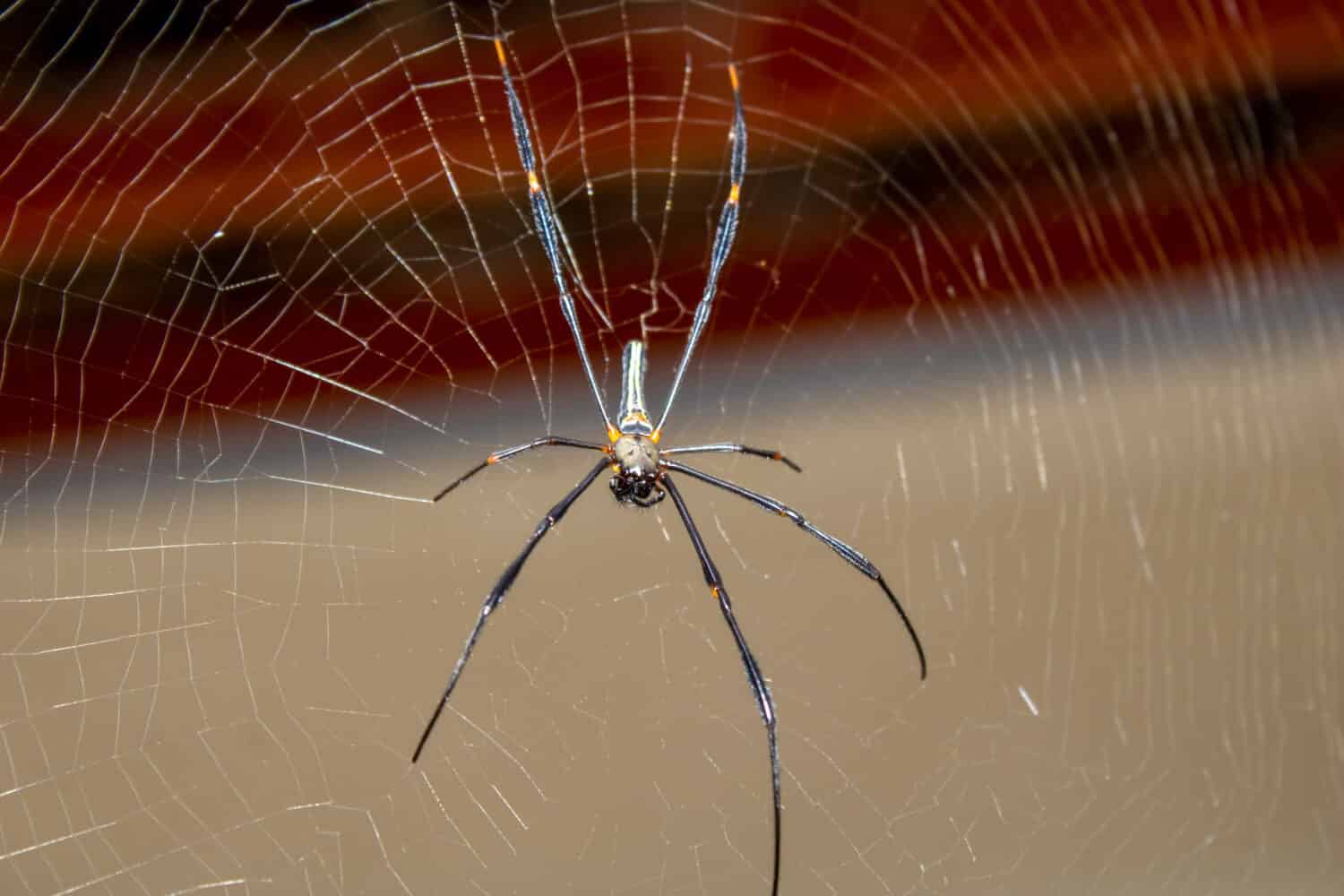
©Fawwaz Media/Shutterstock.com
While the body is relatively small at 3 centimeters, the legs of a tiger spider are up to 4 times the length of their body proportionally. Males are much smaller than females with brown, hairless legs. Females have black legs with matching hair at the joints. Urban areas tend to see more tiger spiders than homes in the countryside.
Since they stay away from vegetation, they seek out habitats with plenty of access to insects. To catch their prey, they spin strong webs that appear yellow. They live solitary lives, and they aren’t aggressive towards humans. Consider yourself lucky to see several of these webs in one area – it is a natural defense against other insects.
Nursery Web Spiders – 10 centimeters
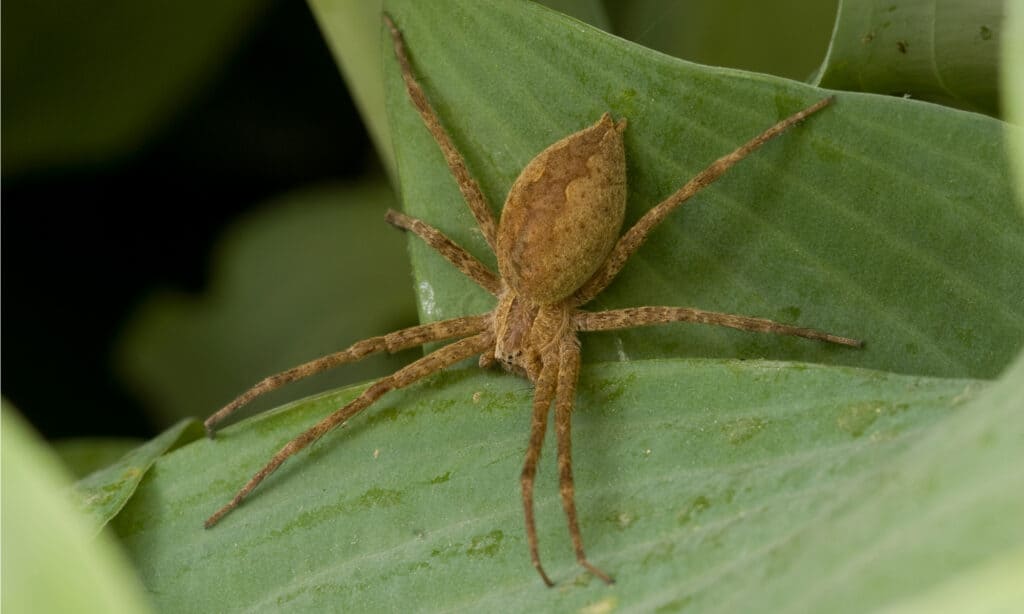
©SDeming/Shutterstock.com
The nursery web spider, also known as the Sydney funnel-web spider, is incredibly dangerous for locals. With a single bite, it is powerful enough to cause death if you don’t get treatment as soon as possible. Even with care, you still should be observed medically. Other than the northern tree-dwelling funnel-web spider, the nursery spider is one of the only species to ever cause fatal bites in Australia.
With a diet of insects, small frogs, crickets, and similarly small prey, they set up their trap nearby, using threads that they sense when moved. If their prey crosses, they emerge from their burrow to catch them. Their primary habitat consists of moist sand or clay. While their body is usually just a few centimeters wide, their legs can be 7-8 centimeters, and males usually have longer legs.
After mating, the female nursery web spider usually eats the male. In an attempt to satiate her appetite, the male brings a fly or another food item when he approaches her. If they prepare a false gift, the female instantly stops the attempts at mating. The only time they ever make a separate web is when they lay their eggs for their hatchlings.
Badge Huntsman Spider – 10 centimeters
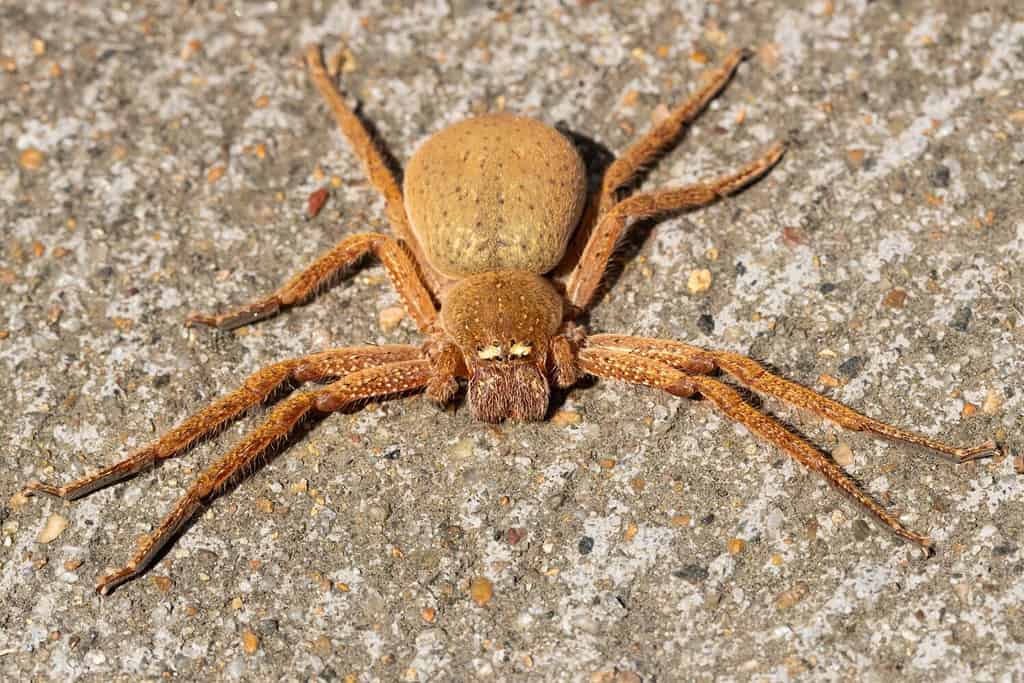
©ice_blue/Shutterstock.com
The badge huntsman spider in New South Wales hunts around at night, using the darkness to conceal it from predators and prey alike. While the females are larger, both genders feature badge-like markings across the abdomen, which is where its namesake comes from. For that reason, it is sometimes called the shield spider. The rest of the body ranges from yellow to brown, and they have whitish hair around their eyes.
This spider lives in New South Wales, dispersed throughout the eastern side of Australia. It prefers woodland areas and moist forests, traversing eucalyptus forests. They like a lot of litter, leading them to find a place in cars and homes in the city. They easily conceal themselves behind visors and under shadows along the dashboard, allowing them to bite unknowing fingers.
The bite of a badge huntsman spider is painful. If you are one of the unlucky ones, get medical attention soon for lasting symptoms, like nausea and swelling. If the main issue is pain, you won’t need more than a cold pack.
Black Wishbone Spider – 9 centimeters
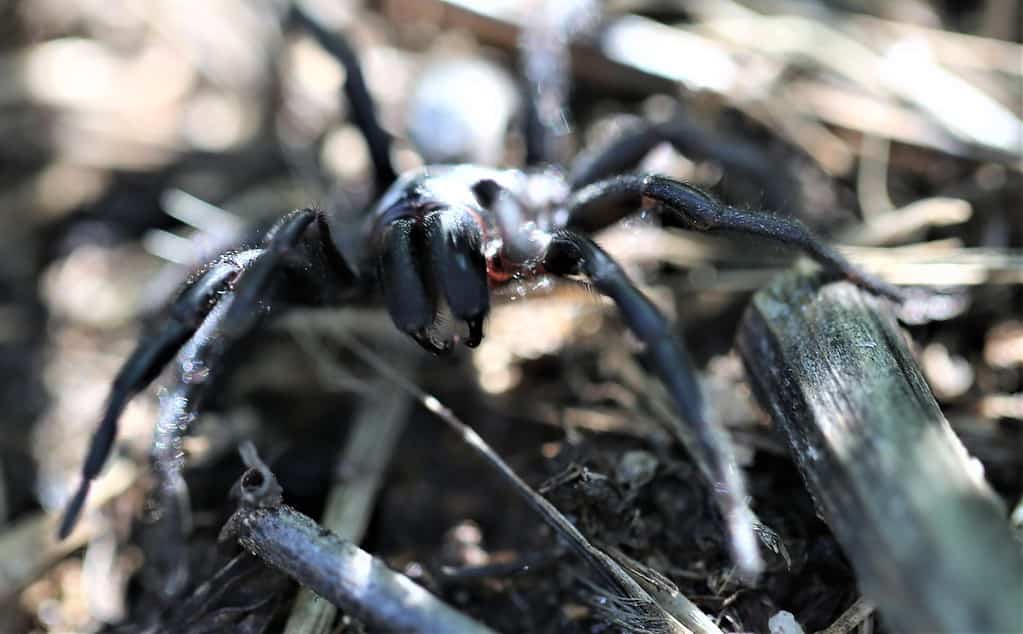
©Creative Commons – License
Throughout the southern Australia land, wishbone spiders thrive. As part of the Aname genus, these spiders live in both rainforest areas and arid climates, seeking out their prey. They get their name from the way that their burrow looks. While females have gold markings on their heads, the heads of male black wishbone spiders have silver. Their bodies are usually about 3-6 centimeters long, though their long legs are at least twice as long.
Living exclusively on land, keep an eye out when you go hiking in the woods where this spider in New South Wales lives. Their dark body makes them hard to see, but you still have a change if you get a look. To warn you of an impending bite, watch for them to stand on their back legs to expose their sharp fangs. While a bite won’t put you at risk for death, they are still very painful.
Sydney Brown Trapdoor Spider – 6 centimeters
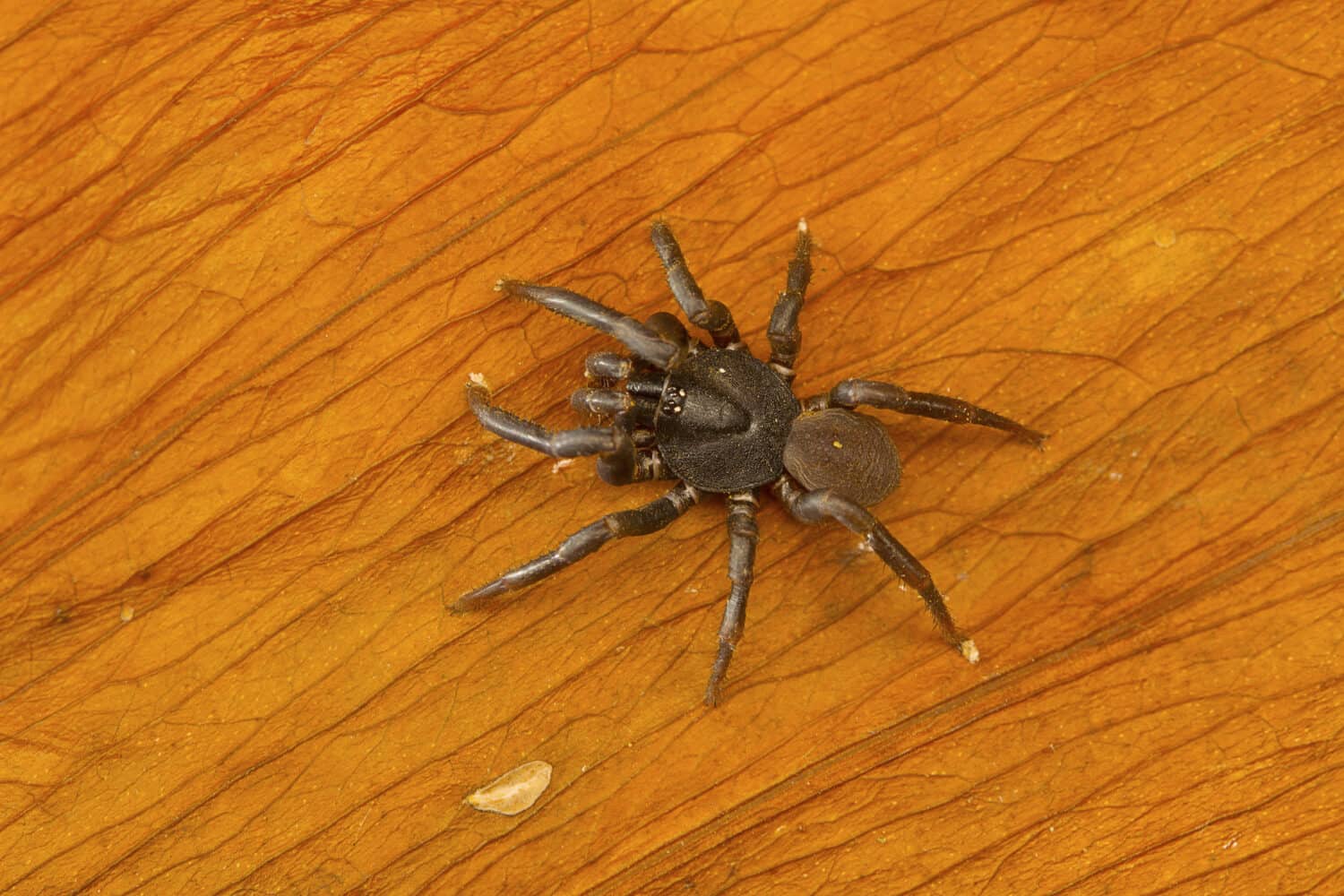
©RealityImages/Shutterstock.com
Sydney brown trapdoor spiders have thick but short bodies at only 3.5 centimeters. Their legs aren’t much longer, usually ranging from 1.5-3 centimeters, depending on the legs. Females tend to have longer legs and a bigger body than their male counterparts, and their body is longer. Their body is much like the Sydney funnel-web spider, but it doesn’t have the same aggressive or venomous traits.
There are multiple species of trapdoor spider in Australia, specified by their scientific names. While the Sydney brown trapdoor spider is called Arbanitis rapax, a similar species of trapdoor spider in New South Wales is Arbanitis villosus. This variation is about the same size, but their coloration and endemicity to the New South Wales region separates them from the Syndey species.
The Biggest Spiders Crawling in New South Wales
| Type of Spider | Size (body and legs) |
| Australian tarantula | 16 centimeters |
| Sydney huntsman spider | 15 centimeters |
| Huntsman (giant crab) spider | 15 centimeters |
| Golden orb-weaving spider | 15 centimeters |
| Golden huntsman spider | 14 centimeters |
| Tiger spider | 12 centimeters |
| Nursery web spider | 10 centimeters |
| Badge huntsman spider | 10 centimeters |
| Black wishbone spider | 9 centimeters |
| Sydney brown trapdoor spider | 6 centimeters |






